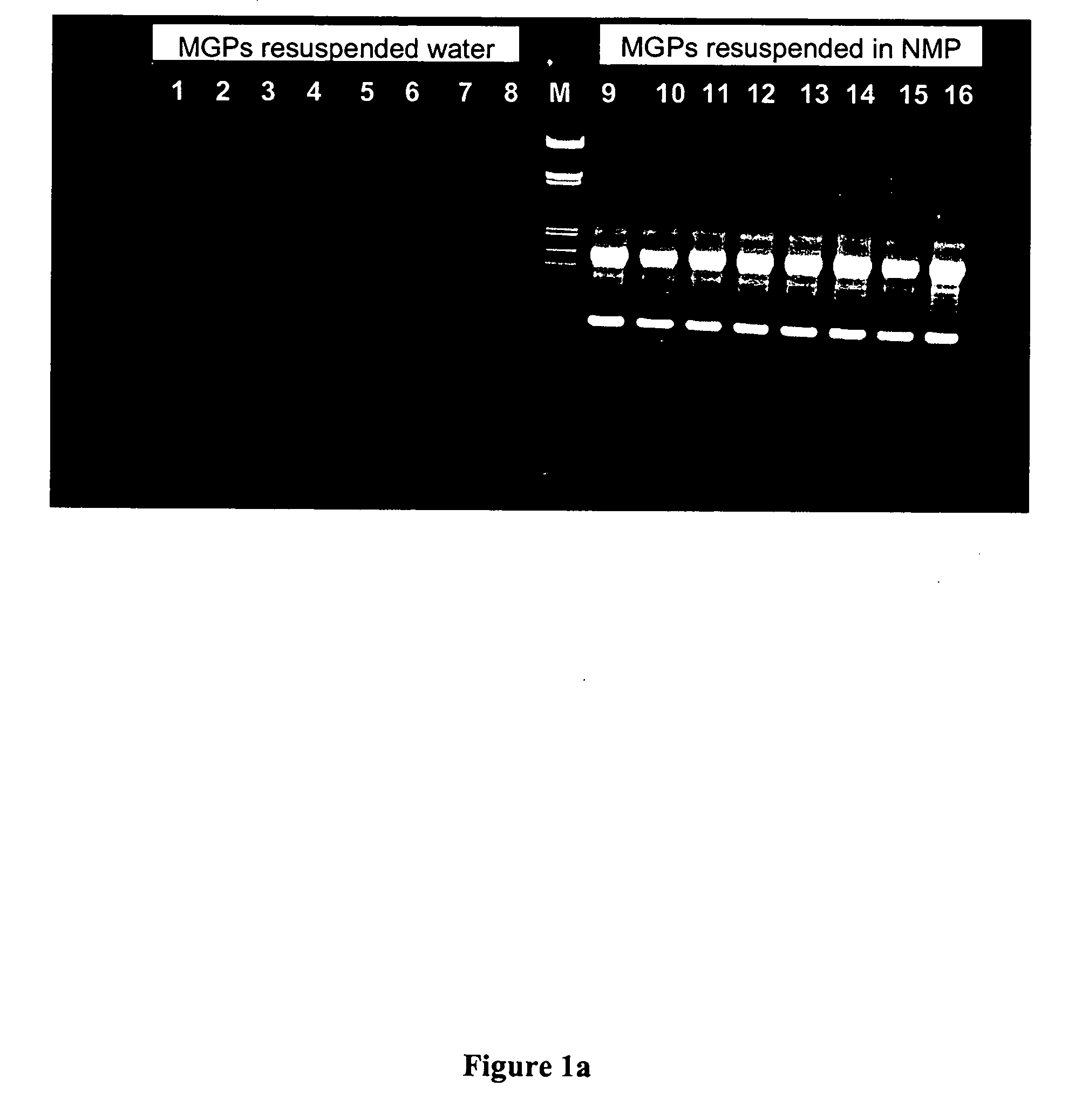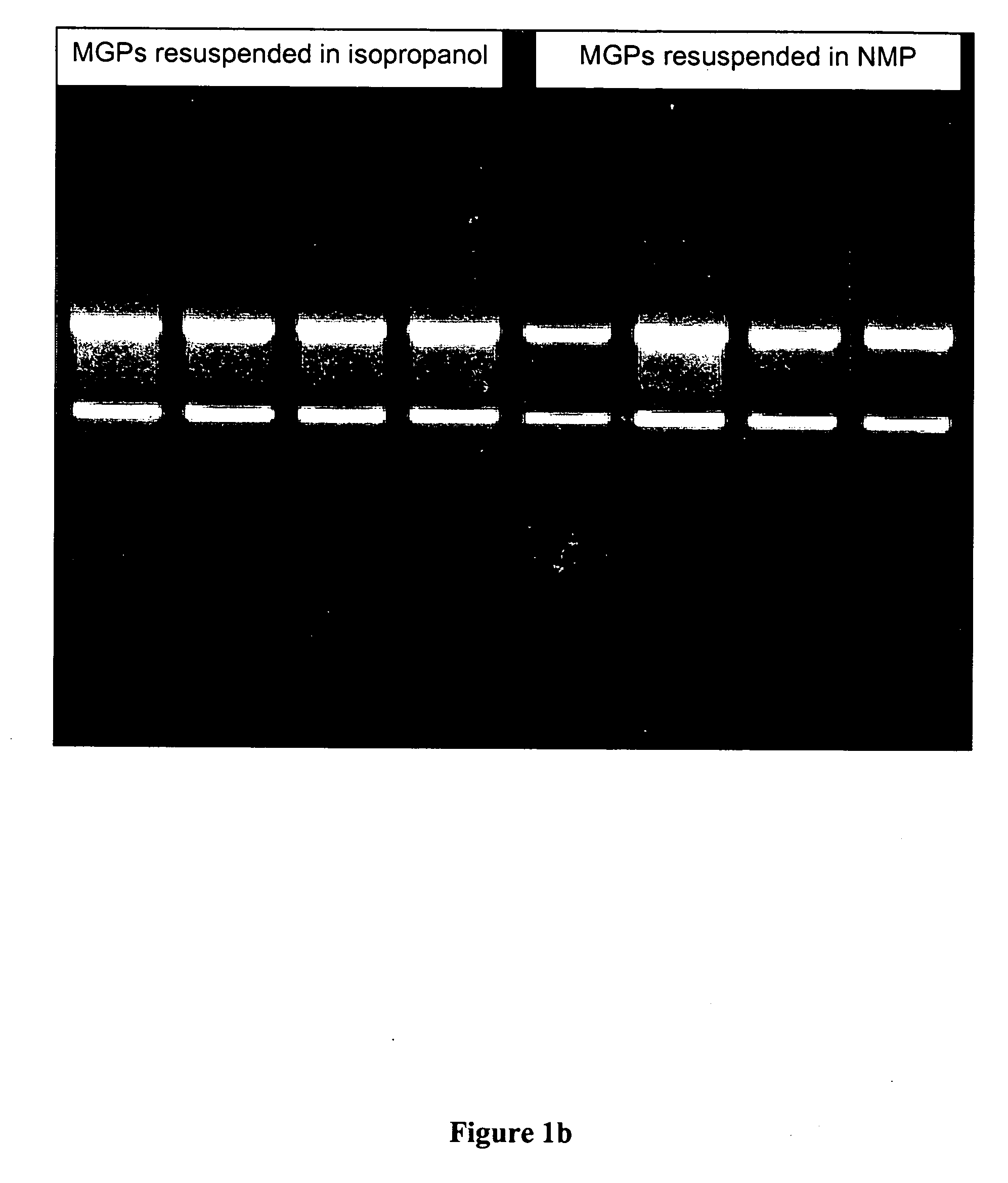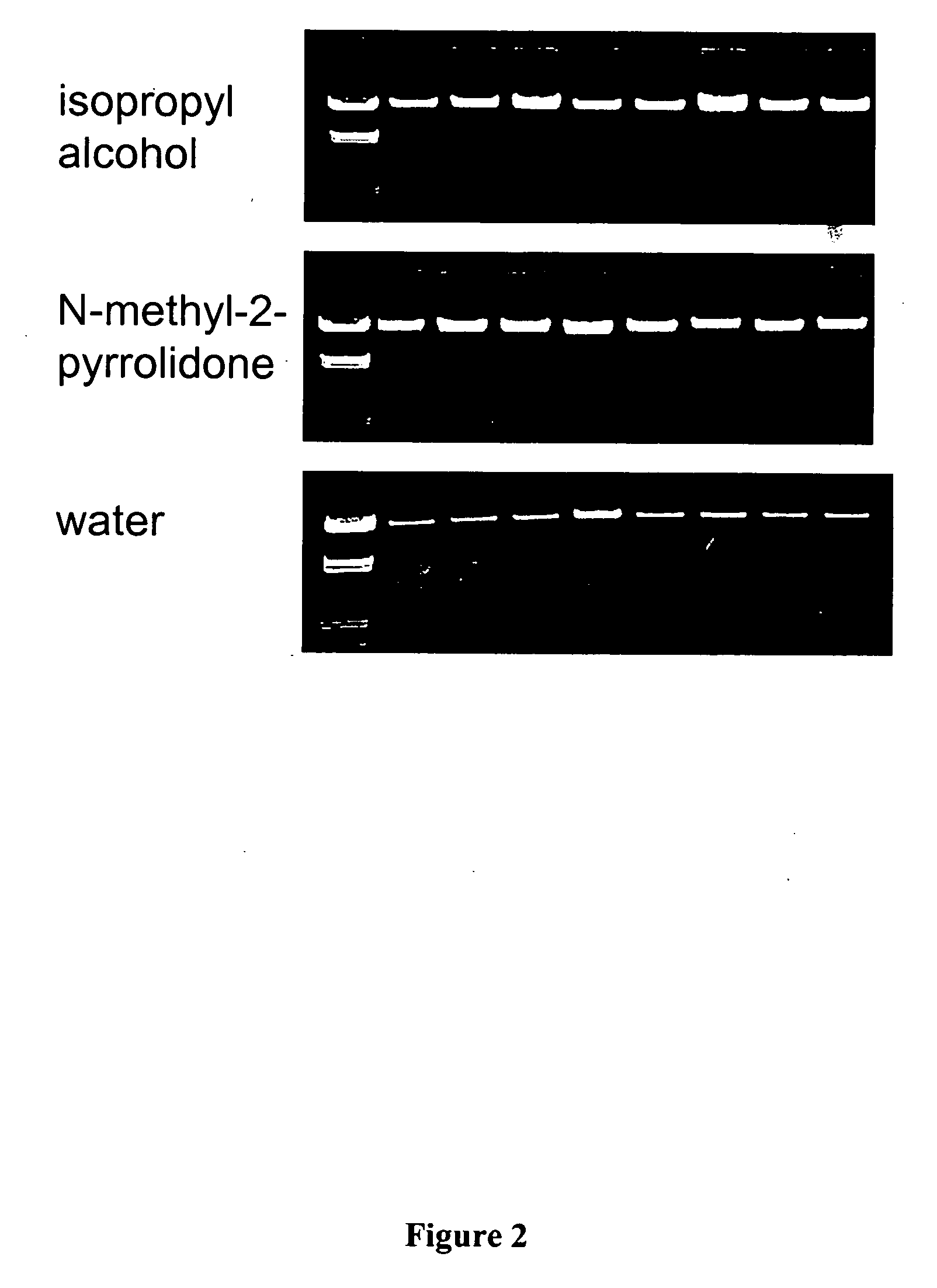Methods for isolating nucleic acids
a nucleic acid and purification technology, applied in the field of nucleic acid purification, can solve the problems of degrading the target component of other enzymes, difficult to isolate or measure, and many biological substances, especially nucleic acids, presenting special challenges in isolating them from their natural environmen
- Summary
- Abstract
- Description
- Claims
- Application Information
AI Technical Summary
Benefits of technology
Problems solved by technology
Method used
Image
Examples
first embodiment
Therefore, the invention is a method for the purification of a nucleic acid, comprising the steps of a) adsorbing on a substrate the nucleic acid from a composition containing (i) an aqueous buffer, (ii) salts in a high concentration, (iii) a water-miscible, non-acidic organic compound comprising a functional group of the formula
whereby W is a carbon atom or a sulfur atom and Z is an oxygen atom or a nitrogen atom, and (iv) the nucleic acid; b) optionally washing with a washing solution the substrate with the adsorbed nucleic acid; followed by c) contacting the substrate with the adsorbed nucleic acid with a solution containing salts in a lower concentration compared to the composition of step (a), thereby desorbing the nucleic acid from the substrate; and d) separating the solution with the desorbed nucleic acid from the substrate, thereby purifying the nucleic acid; and optionally (e) precipitating the desorbed nucleic acid from the solution of step (d) and isolating the precipit...
specific embodiments
EXAMPLE 1
DNA Isolation Using Glass Fiber
1,000 μl of whole blood from a healthy donor was incubated with 100 μl proteinase K solution (Roche product no. 745723; 90 mg dissolved in 4.5 ml water) and 1,200 μl chaotropic binding buffer (6 M guanidinium-HCl, 10 mM trisHCl, 20% Triton X100 pH 4.4) at 70° C. for 10 minutes.
After adding 500 μl of (a) isopropanol, (b) acetonitrile, (c) dimethylsulfoxide or (d) methylethylketone, the lysate was transferred to a glass fiber filter tube (filter tube taken from the kit of Macherey and Nagel Cat. No. 740 954.20). After centrifugation for 3 minutes at 1,900× g the flowthrough was discarded and the filter tube was placed on a collection tube. 2,000 μl of a high ionic inhibitor removal buffer (5M guanidinium-HCl, 20 mM tris, 60% Ethanol, pH 6.6) was pipetted on the glass fiber filter and centrifuged for 1 minute at 3,000× g. Followed by two washing steps with 2,000 μl wash buffers (20 mM NaCl, 2 mM trisHCl, 80% ethanol, pH 7.5) and centrifugat...
example 2
RNA Isolation on the MAGNAPURE LC Instrument
106 Hela cells (in a volume of 200 μl) were directly transferred to the sample cartridge of the MAGNAPURE LC instrument (Roche Diagnostics GmbH, Mannheim). The respective protocol was chosen from the software, the necessary plastic disposables and kit reagents were loaded onto the workstation, and the automated RNA isolation was started. The MAGNAPURE LC instrument then automatically performed all isolation and purification steps like cell lysis with a special lysis / binding buffer, enzymatic protein digest with proteinase K, enzymatic DNA digest with DNase I, binding of RNA to magnetic glass particles, several washing steps to remove unbound substances and impurities, elution of the pure RNA in a special elution buffer and finally the transfer of the eluate to a cooled storage cartridge.
When non-acidic organic compounds such as N-methyl-2-pyrrolidone were to be analyzed with respect to their performance in the nucleic acid isolation p...
PUM
 Login to View More
Login to View More Abstract
Description
Claims
Application Information
 Login to View More
Login to View More - R&D
- Intellectual Property
- Life Sciences
- Materials
- Tech Scout
- Unparalleled Data Quality
- Higher Quality Content
- 60% Fewer Hallucinations
Browse by: Latest US Patents, China's latest patents, Technical Efficacy Thesaurus, Application Domain, Technology Topic, Popular Technical Reports.
© 2025 PatSnap. All rights reserved.Legal|Privacy policy|Modern Slavery Act Transparency Statement|Sitemap|About US| Contact US: help@patsnap.com



